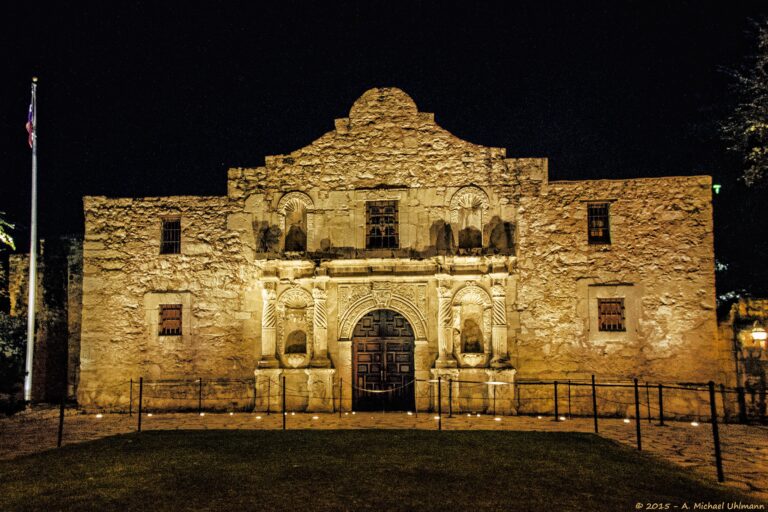San Antonio: A Leading Beacon of Bilingualism in the United States
Exploring San Antonio’s Multilingual Fabric and Its National Standing
San Antonio has emerged as a prominent bilingual metropolis, recently ranked as the fourth most bilingual city in the U.S., according to a KSAT study. This accolade highlights the city’s extensive linguistic variety and emphasizes the increasing significance of bilingualism in urban America. Beyond celebrating San Antonio’s cultural vitality, this ranking reflects broader demographic shifts influencing communication trends nationwide.
Languages shaping San Antonio’s bilingual identity include:
- Spanish – the predominant language rooted in the city’s heritage
- Vietnamese – supported by active immigrant communities and enterprises
- Tagalog – indicative of a growing Filipino demographic
- German – a testament to historical influences in the region
- Arabic – fostered through cultural institutions and religious centers
| Language | Approximate Speaker Percentage | Community Engagement |
|---|---|---|
| Spanish | 62% | Bilingual education, cultural celebrations |
| Vietnamese | 4.5% | Local businesses, cultural festivals |
| Tagalog | 3.2% | Community groups, religious gatherings |
| German | 2.1% | Heritage events, historical societies |
| Arabic | 2.0% | Cultural centers, mosques |
Driving Forces Behind San Antonio’s Bilingual Prominence
San Antonio’s ascent as a bilingual hub is deeply rooted in its multicultural heritage and shifting population dynamics. The city’s substantial Hispanic community, fluent in both English and Spanish, forms the backbone of this linguistic duality. This bilingualism permeates everyday life—from commerce and education to media—creating a fertile ground for multilingual communication to flourish. Moreover, local schools have expanded dual-language immersion and English as a Second Language (ESL) programs, nurturing language proficiency among youth and reinforcing bilingual literacy.
Additional contributors to this bilingual surge include:
- Economic Expansion: Businesses increasingly engage in international trade and multicultural marketing, necessitating a workforce skilled in multiple languages.
- Community Support Systems: Municipal agencies and nonprofits provide extensive bilingual resources, ensuring language inclusivity in public services.
- Immigration Trends: Ongoing migration from Latin America and Asia sustains the demand for bilingual communication and cultural exchange.
| Influencing Factor | Effect on Bilingualism |
|---|---|
| Educational Initiatives | Boosted bilingual literacy and language retention |
| Business Climate | Increased demand for multilingual employees |
| Demographic Diversity | Ongoing cultural and linguistic integration |
How Bilingualism Shapes Education and Workforce in San Antonio
San Antonio’s bilingual environment profoundly influences its educational system, where language diversity is embraced as a valuable asset. Schools have increasingly adopted dual-language curricula that not only enhance cognitive development but also foster cultural sensitivity among students. Research links these programs to improved academic outcomes and greater student participation, as bilingual education promotes inclusivity and prepares learners for a globally connected society. Mastery of both English and Spanish equips students with skills that open doors to diverse academic and professional opportunities.
In the workforce, bilingualism is a critical advantage: Employers across healthcare, customer service, technology, and education sectors actively seek bilingual talent to better serve diverse populations and expand market reach. San Antonio’s economic vitality benefits from targeted workforce development programs that cultivate language skills and maximize the potential of bilingual employees. Below is an overview of sectors thriving due to bilingual capabilities:
| Industry | Bilingualism’s Contribution |
|---|---|
| Healthcare | Enhanced communication with patients, leading to better care outcomes |
| Customer Service | Improved client relations and expanded customer base |
| Technology | Access to international markets and diverse talent pools |
| Education | Promotion of cultural competence and bilingual teaching methods |
Strategic Policy Measures to Enhance San Antonio’s Multilingual Growth
To effectively support its expanding multilingual population, San Antonio must implement inclusive language policies across public sectors. This involves broadening bilingual education programs to help students retain their native tongues while achieving English proficiency. Additionally, enhancing translation and interpretation services within city agencies will eliminate communication barriers, ensuring equitable access to healthcare, legal aid, and civic participation for non-English speakers.
Equally important is the promotion of culturally aware workforce training. Collaboration between local government and businesses can foster outreach initiatives that encourage bilingual employment and provide language development workshops. Recommended actions include:
- Installing multilingual signage in public spaces such as transit stations and community centers
- Allocating grants to nonprofits dedicated to language access and support services
- Offering incentives to employers who actively recruit and retain bilingual staff
| Policy Initiative | Anticipated Outcome |
|---|---|
| Expanded bilingual education | Elevated academic success and preservation of cultural heritage |
| Comprehensive translation services | Greater civic participation and improved service delivery |
| Cultural competency training | Stronger workplace relations and community trust |
Final Thoughts: San Antonio’s Role as a Multilingual Epicenter
As San Antonio continues to evolve and diversify, its recognition as the fourth most bilingual city in the nation underscores the city’s rich cultural mosaic and linguistic vitality. This distinction not only celebrates the community’s heritage but also highlights bilingualism’s critical role in driving economic growth and fostering social cohesion. With ongoing support from residents and policymakers, San Antonio is well-positioned to deepen its legacy as a vibrant center for cultural exchange and inclusive communication.




